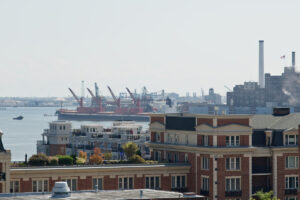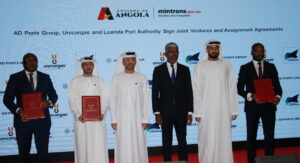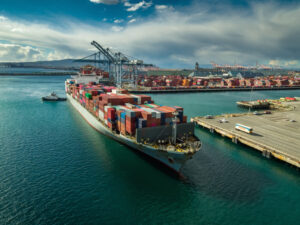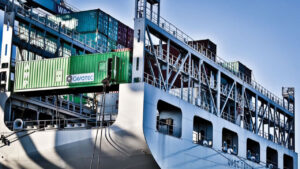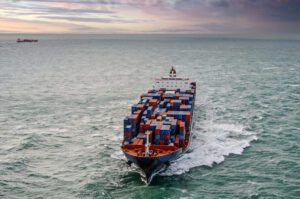Following Navis' debut Asia Pacific Summit in September 2018 in Qingdao, China, PTI spoke to Chief Customer Officer Bruce Jacquemard about the trends affecting the shipping supply chain in the APAC region.
In the second part of two-part Q&A, we discussed how APAC can work towards better data collaboration, how China's Belt and Road Initiaitive is affecting the supply chain and what the future holds for the region.
Read the first part of PTI's Q&A with Bruce Jacquemard here
PTI: Let us talk about data sharing and collaboration – are terminals in APAC willing to share and collaborate with each other?
Jacquemard: We have our XVELA solution, one of the key solutions in the collaboration space, so we have a first-hand view of what it is happening and about 18 months ago we started seeing a significant change in the openness towards collaboration and sharing data.
We’ve come at it from a point that’s between the carrier and terminal, and getting the collaboration on the stowage plan to drive this efficiency throughout the entire service.
In that time, we’ve seen the openness towards sharing data, and much of this has been done with pilot projects that we have run that include some of the major players in the region, both on the carrier and terminal side.
I would say there is still work to be done. Unlike other industries, that have become comfortable with sharing data for the overall good of the supply chain, we’re still seeing slowness.
#SPSC18 Chuck Schneider, @naviscargo, encouraged ports and terminals to implement solutions that are already available, as well those which are yet to be innovated.
Port Technology thanks @naviscargo for supporting the Smart Ports and Supply Chain Technologies Conference. pic.twitter.com/Zc4lzuspIX
— Port Technology (PTI) (@PortTechnology) October 5, 2018
PTI: How can the APAC region find common ground and better collaborate when it comes to data?
Jacquemard: APAC has some of the largest global leaders on both the carrier side and the terminal. We’re in the middle and trying to push the envelope when it comes to sharing data.
The interest is definitely there and nobody is currently putting their hand up and saying ‘this doesn’t makes sense’, they’re just more concerned with lower hanging fruit that can drive a higher amount of value.
I think we will get there, it’s just priorities. You can get the head of digitisation and the head of operations from either a carrier or terminal they’re excited because they know the value that it will drive, but it just becomes a priority issue. But we are seeing good progress.
Navis Opens Registration for Navis World 2019 #forgingthefuture #customerobsessed https://t.co/wjwjaD8KOj pic.twitter.com/azoOuyegoC
— Navis (@naviscargo) September 19, 2018
PTI: Earlier you mentioned China’s Belt and Road Initiative, what effect is it having would you say on the APAC region?
Jacquemard: Earlier this year we announced a strategic partnership with COSCO on the terminal side of their business. Through initiatives with partners like COSCO, we’re seeing the movement towards the inland intermodal terminal depot and the activity at the key transition points of the BRI.
Read More: COSCO Triples Market Share in Three Years
For example, key locations have evolved their platforms to accommodate and provide greater visibility from the waterside terminals to the inland intermodal terminals. That’s the first step for us as a technology provider.
With the roots of it being in APAC and China, laying this foundation around the world will, we think, be the underpinning of the infrastructure improvements that will make better things happen.
We can see the investment and where it is going around the world and how it will link supply chains and provide greater end-to-end capabilities.
What is the Belt and Road Initiative and how will it affect the global supply chain? Find out more by reading an exclusive PTI Insight
Credit: Navis
PTI: Do you see it as a positive effect on the regional supply chain?
Jacquemard: Yes, we believe that it will. A lot of the issues surrounding data sharing are due to the underpinning infrastructure not being there. This is a big step forward in allowing for this exchange of data to happen.
Find out what Navis thinks are the secrets to developing an intelligent digital supply chain by reading a Port Technology technical paper
PTI: Did you sense any opposition to the BRI at the Navis summit?
Jacquemard: Not really. The majority of the audience at the summit was from terminal operations from China and the investment strategies that they all have are similar – but they differ in how they view the BRI.
There wasn’t really opposition because most of the discussion at the summit was around driving efficiency, such as asking ‘how do I become more efficient?’ and ‘how do I engage more efficiently on the landside movements?’
Credit: Navis
PTI: Did the Navis APAC Summit see any concrete proposals or collaborations put forward?
Jacquemard: We had a couple of sessions around XVELA – specifically how it links to collaboration between terminals and carriers.
In many cases, we had operators that had both terminal and carrier business, where there is the easiest opportunity to collaborate. Collaboration is still hard and there was still talk around how it can take place – even within a single business.
Ports America’s Napoleon Container Terminal Puts Customers First With
Navis N4 Implementation https://t.co/JEaY0rX6qO #forgingthefuture #customerobsessed pic.twitter.com/cuzY2GjbXv— Navis (@naviscargo) October 3, 2018
PTI: What about the US? Was there any concern regarding the US’ apparent withdrawal from the APAC region?
Jacquemard: It’s interesting because everyone is adopting a ‘wait and see’ attitude. We’ve seen with the recent agreement between the US, Mexico and Canada that these things tend to run up to the wire and then there’s an outcome which appears reasonable to everyone.
From a technology providers’ view, it appears to be something similar along these lines. I think people are looking at this and thinking ‘do I need a plan B?’
We’re not seeing major changes but everyone is looking at it and considering what impacts could look like and how to make adjustments.
PTI: The APAC region has seen huge growth in the past generation or so, how much of the global economy accounting for in a few years’ time?
Jacquemard: Looking at growth in our business, where terminals that need the technology that we provide, the large percentage we see coming from the APAC region, whether it is through collaboration around XVELA, or new offerings in and around TOS, we see the majority coming from APAC and we’re organising our business to support that level of activity.
Bruce Jacquemard:
Bruce Jacquemard is Chief Customer Officer at Navis, a global leader in supplying operational technologies and services that unlock greater performance and efficiency for some of the world's leading organizations across the shipping supply chain.





